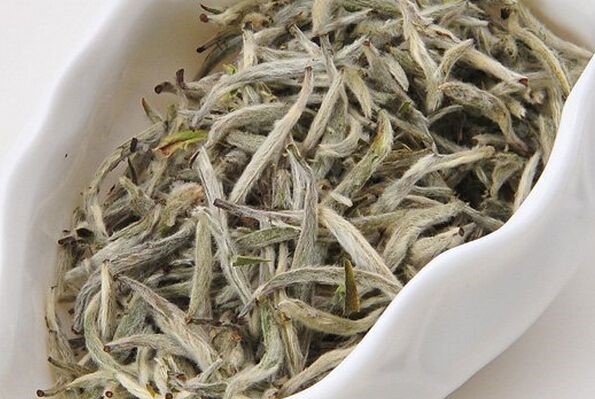
NEWS CENTER
Author:XIANGFENG TEA Time:2022-07-15 Hits:7717

Tea lovers who usually drink tea attentively can often see some fluffy vellus hairs attached to some tea leaves, and white hairs will also float on the tea soup when making tea.
So why are there so many pekoe on tea leaves?
Does tea with more pekoe have to be good tea?
Are pekoe good or bad?
......
⒈ What is pekoe?
Pekoe is the tiny fluff on the tip of the tea bud, which is rich in nutrients such as theanine and tea polyphenols.
⒉ Why are there pekoe on the tea leaves?
The pekoe on the back of tea leaves are actually the characteristics of tea tree varieties. Different varieties have different length, density, thickness, color and distribution of pekoe.
Tea pekoe mainly grow on the lower epidermis of young buds and leaves, and are rich in tea polyphenols, amino acids, caffeine and other quality components, which have an important impact on the formation of the flavor and quality of dry tea. Generally speaking, the more tender the fresh leaves are, the more pekoe there are, so this indicator is used as an important indicator of the tenderness of tea leaves in many cases.
⒊ What is the effect of pekoe on the quality of tea leaves?
Pekoe are rich in a variety of ingredients, which have an important impact on the quality of dry tea.
color
The pekoe has a variety of colors. This has a lot to do with the changes in the content of tea polyphenols during the tea making process.
Generally speaking, Biluochun is known for its Pekoe exposure, which is because the tea polyphenols in green tea are not oxidized, and the hairs on its young shoots and leaves are usually white. In the black tea category, such as high-grade Qimen black tea, it is golden yellow, because most of the tea polyphenols contained in it have been oxidized into yellow-red theaflavin and thearubigin, so black tea made from young buds and leaves, The hairs on the bud leaves are golden yellow.
taste
The pekoe is dissolved in the tea soup, because the pekoe are rich in amino acids and other active ingredients, which also enhances the aroma and taste of the tea soup. With a certain amount of tea, the tea soup will be fresher.
For example, the tea soup of high-end famous teas (such as Biluochun, Junshan Yinzhen, etc.) has a mellow taste and a high aroma. In addition to the delicate fresh leaves and rich contents, the hairiness is also one of the main factors.
Tips:
Of course, if there is too much tea, the brewed tea soup will be a little cloudy, which often makes people mistakenly think that such tea is not good. How to identify?
Generally speaking, for tea with more than a small amount of tea, the first two or three brews will be slightly cloudy, and then the tea soup will become clear. For tea with poor quality, the tea soup will always be cloudy. In this way, two or three bubbles can be brewed, and the two can be distinguished.
aroma
Pekoe mainly grow on the lower epidermis of young buds and leaves, and are rich in tea polyphenols, amino acids, caffeine and other quality components, which have an important impact on the formation of the flavor and quality of dry tea.
There are gland cells that secrete aromatic substances at the base of the pekoe, which can secrete aromatic substances. Therefore, the young buds and leaves have more pekoe, and the tea leaves are more fragrant, and the freshness of the dried tea will be higher.
Tips:
It should be noted that among the famous teas with high tenderness, pekoe are particularly important. However, the number of pekoe is not the only criterion for judging the quality of tea leaves. For example, in Longjing, in the process of processing, there is a process called Huiguo. The purpose of Huiguo is mainly to dry the tea leaves and promote the further formation of tea aroma substances, but it also has the purpose of grinding off the tea leaves on the surface of the tea leaves. One of the characteristics is called "smooth, flat". Therefore, teas such as Longjing and Zhuyeqing cannot use the number of pekoe to determine their grades.
For another example, oolong tea (Tieguanyin, Dahongpao), Pu'er tea, black tea, white tea (Shoumei, Gongmei, Baipeony) and other teas are required to be picked from open-faced leaves when they are picked and made, and most of them are rough and old. , It is too tender to make such a mellow flavor.
...
To sum up, the quality of tea is the result of the combined effect of many factors. It is not necessarily tender, and the tea with more pekoe is the best. For this tiny hair, we can appreciate it, but we don't need to pursue it too much.

HUNAN XIANGFENG TEA INDUSTRY CO., LTD
Headquarter: Jinjing Town, Changsha County, Hunan 410158, China
Office Add: 4th Floor, 1st Building, XiangFeng Tea Innovation Industry Park, No.12, Dongshi'er Rd., Changsha County, Changsha City, Hunan Province, China
Changsha Economic Development Zone, Changsha County, Hunan 410100, China